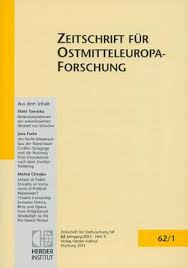Same Kings, Different Narratives: Illustrated Catalogues of Rulers of Poland, Bohemia and Hungary in the Sixteenth and Seventeenth Centuries
Same Kings, Different Narratives: Illustrated Catalogues of Rulers of Poland, Bohemia and Hungary in the Sixteenth and Seventeenth Centuries
Author(s): Karolina MroziewiczSubject(s): Cataloguing, Czech Literature, Polish Literature, 16th Century, 17th Century
Published by: Verlag Herder-Institut
Keywords: medieval kings; visual representations; national narratives; historical imagery; cultural memory; Poland; Hungary; Bohemia;
Summary/Abstract: The popular early modern catalogues of rulers proliferated literary and visual representations of the shared Polish, Bohemian and Hungarian medieval kings that were specific and intelligible to a particular kingdom’s political community. The article examines the dissimilar images of the two last Přemyslid kings, Wenceslas II (1271-1305) and Wenceslas III (1289-1306), as well as of Louis of Anjou (1326-1382) and Sigismund of Luxembourg (1368-1437), the perception of whom differed along political lines. The textual and iconographic analyses of the corpus of 25 catalogues, written by Polish, Czech, Hungarian, Austrian and German authors of four different denominations, demonstrate that the representations of the shared kings, even if colored by current agendas and the changing interests and expectations of their readers, remained virtually unchanged throughout the centuries. The cohesion of their representations resulted from the selection and use of a limited number of sources and models, namely medieval chronicles (in the case of texts), and royal seals or other official royal representations (in the case of images), closely connected and relevant to the particular political communities. In the cases when stylistic features had changed and adjustments had been introduced into the iconography of the royal insignia and heraldic programs, the faces depicted in the catalogues, which were well known to the particular community, remained the same. The popularity and omnipresence of the catalogues in early modern East Central Europe facilitated the broad internalization of the kings’ lives and likenesses and supported the differentiation of historical memory and national narratives in the kingdoms of Poland, Bohemia and Hungary, which still resonate in the popular knowledge of Poles, Czechs and Hungarians about these kings today.
Journal: Zeitschrift für Ostmitteleuropa-Forschung
- Issue Year: 69/2020
- Issue No: 1
- Page Range: 27-67
- Page Count: 40
- Language: English

